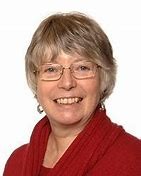Jennifer Alice Clack, FRS (née Agnew; 3 November 1947 – 26 March 2020)
My late sister-in-law, Professor Jennifer Clack, FRS, FLS, was an eminent woman scientist. She was a palaeontologist who described how vertebrates moved from water to land. She devoted her academic life at Cambridge University to the study of tetrapods (four-limbed vertebrates).
She established that the earliest ones in the Upper Devonian (383 – 372 million years ago) lived in water. Their limbs ended with 6 – 8 digits and could not have supported the body on land. By the earliest Carboniferous (359 -347 mya) the tetrapods were on land. Their limbs ended in 5 digits.
In her last expedition on the English/Scottish border, she described 6 new tetrapods, with more to be identified. She wrote a summary of her work in Gaining Ground (2002, 2012). She has an entry in Wikipedia and a website (Google Jennifer Clack).
Obituaries: www.zoo.cam.ac.uk and Nature 580, 587 (22 October 2020). This is an introduction to her obituary from the Daily Telegraph:
“Professor Jenny Clack, who has died aged 72, was a palaeontologist who solved one of the greatest mysteries in the history of life on Earth: how vertebrates made the transition from sea to land, from animals with fins to animals with legs; in 2012 her career was the subject of a BBC documentary, Beautiful Minds.”
Peter Clack
***** ***** *****
Ada Lovelace: a mathematician, a computer scientist and a visionary
One of the most important women in science history is Ada Lovelace (1815-1852) widely recognised as the first computer scientist. She was a truly remarkable woman; unquestionably one of the most important women in science history.
She was born in 1815, the daughter to Lord Byron and Lady Byron, who were married for just a year – when Ada only five weeks old Lady Byron left her lord and never saw him again. They eventually separated and Byron died in 1824 aged 36.
When Ada was born her parents were extremely poor; one of the reasons for the separation was that Lady Byron could no longer stand the stress of bailiffs regularly knocking on the door and in some cases camping out in the front room. But, curiously enough, Byron was poverty-stricken by choice; he had a strange, almost neurotic belief, that he shouldn’t make money from his poetry even though he was highly successful at it and his poems were all best-sellers.
When Ada was a girl, her mother inherited a substantial fortune and for the rest of Lady Byron’s life she was one of the wealthiest women in Britain, owning, for example, numerous coal mines in the north of England.
Lady Byron was herself obsessed with the idea that if she didn’t educate Ada properly, Ada’s mind might, as Lady Byron perceived it, go to ruin like Lord Byron’s had. Lady Byron believed that if she could tame Ada’s imagination, this would prevent Ada from going down the line of imaginative self-indulgence that Byron himself had, as she saw it, gone down.
Lady Byron set out to use mathematics as the method of taming Ada’s imagination, figuring that if she could arrange for Ada to be educated in mathematics above all, the taming of the girl’s imagination would be successful. She was initially educated by those governesses and tutors who regularly changed because Lady Byron tended to fall out with them as with most other people.
Then when Ada was only 17 years old, and on the evening of 5 June 1833, she met Charles Babbage a man who would become arguably her most important friend. He was 24 years older than her, and she very quickly became fascinated with his plans for building a calculating machine called a ‘Difference Engine’. The purpose of this was to calculate mathematical tables automatically without error.
Augusta Ada King, Countess of Lovelace’s life was unfortunately short: she was born on 10 December 1815 and passed away on 27 November 1852 from an unfortunately and tragically very painful uterine cancer, at a time when the only palliative available to lessen her pain was laudanum, a mixture of brandy and morphine, which had only limited effect as it was taken orally and much of it was broken down by stomach acid: the hypodermic syringe would be invented in 1853, a year after her death.
Ada packed a great deal into those 36 years and is buried in our local church of St Mary Magdalene Hucknall.
David Rose
***** ***** *****


